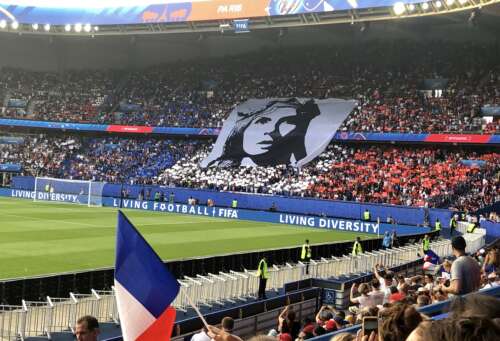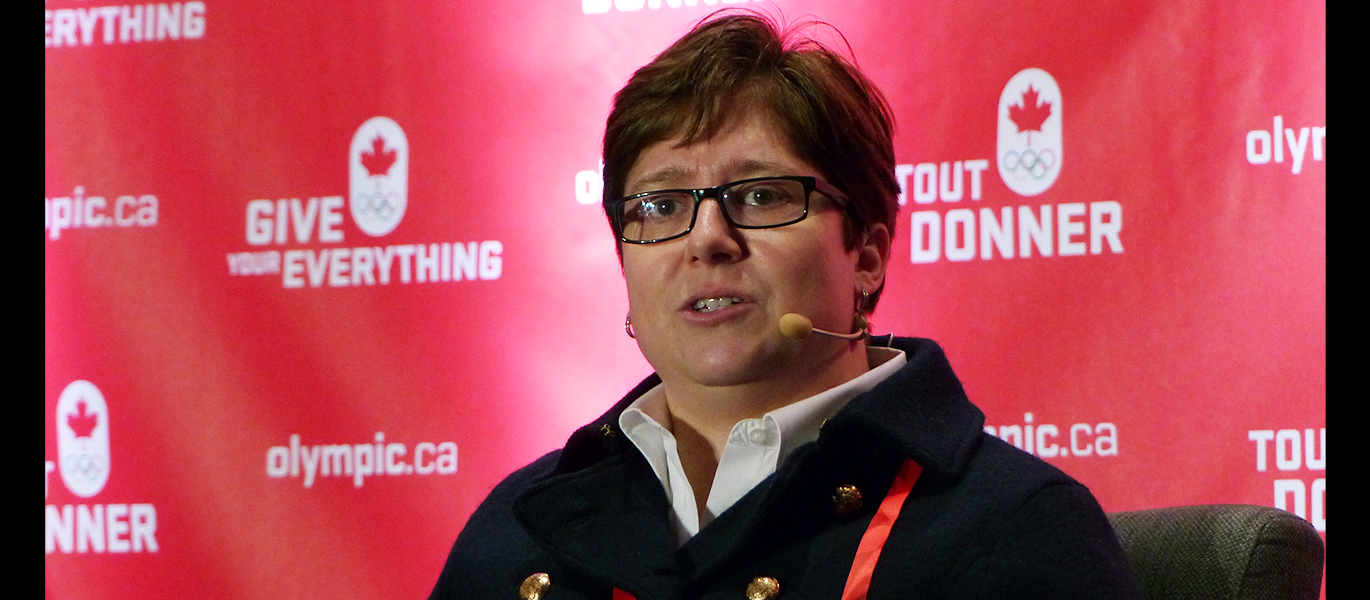As an 11-year-old, Dr. Ann Pegoraro remembers being told there was no place for her in a schoolyard game of ball hockey. It was the first time she learned there was something she could not do, because of her gender.
Now widely regarded as a leader in advancing women in sport, Pegoraro is the Lang Chair in Sport Management at the University of Guelph; director of the International Institute for Sport Business and Leadership at Lang; co-director of E-Alliance, the National Research Network for Gender Equity in Sport; professor in the School of Hospitality, Food and Tourism.
Her passion for the inequities female athletes face is because she was one.
“Every time a woman breaks a barrier, we want to celebrate it, but I also want to look forward to not having to celebrate it anymore,” she said, adding that as a white woman, there is an inherited privilege and ease she has that women of colour are not afforded.
Achievement should be recognized for what it is, regardless of race or gender, she said, but at the same time, “I know the importance of representation, and it really matters.”
International Women’s Day serves to inspire such progress, but for Pegoraro it remains “a double-edged sword.”
Gender equity in sport requires looking at the full picture

When you’re a female athlete and you build a career advocating for others like you, the personal naturally becomes professional, as in Pegoraro’s case.
“Women have always had to be at the forefront of some of these things because they’ve had no choice and had to fight for every inch of space that they get,” she said.
The last decade of Pegoraro’s research has been dedicated to digital social media. As part of E-Alliance’s funding from Sport Canada to achieve gender equity in sport by 2035, Pegoraro, with five other academics, has written, “DisruptHERS: Driving a New Model for Women’s Sport.” The report brings together, for the first time, factors like technology, culture and generational shifts to paint a picture of the disruption women’s sport is driving.
“Nobody’s put the full story together,” Pegoraro said, explaining how for example, female athletes have utilized social media to build an audience, to brand themselves and then pitched that value component to streaming platforms to see their games aired, bypassing traditional broadcast models that most men’s leagues are dependent upon.
“I watched women athletes use Instagram, as an example, to build an entire media platform where they’re selling merchandise or showcasing their sponsorships,” she said. “That didn’t exist for them before.”
Pegoraro calls that digital prowess one of the “biggest liberating technological advances.”
Pair that with the inclusivity-focused Generation Z’s penchant for all things digital and the value they place in influencers or products that speak meaningfully to them and Pegoraro said you have “an opportunity for women’s sport” because, by its very nature, it intersects with gender equity and social justice.
Gen Z is a generation that’s changing how humans consume, Pegoraro explained. “If we’re not capturing them in some way, they are going to drive how this changes.”
For decades, Pegoraro said, the media ecosystem has been controlled by large conglomerates and broadcasters — a system created by men, for men, at a time when consumer behaviour was much different than it is now. Women athletes don’t need traditional media structures like press conferences or prime viewing slots anymore, she said.
“That was one of the biggest liberating technological advances.”
No matter the sport, female athletes are not provided the same resources, funding, salaries, exposure, or even credibility that men are, she said. “Men are often hired on potential, whereas women are hired on proof, on performance. We see it in sport all the time.”
Levelling the playing field means women need to invest in women

The NBA, in its early days, had an average attendance of 7,000 people, similar to audience numbers at the start of the WNBA, Pegoraro explained. The difference was the investment put into the men’s league that over decades, infinitely increased its value.
“One of the reasons we wrote the report is because people can’t put it together,” she said, to see how the disruption has made women’s sports prime for the same kind of investment.
When the pandemic halted sports of all kinds for the first time in history, the six co-authors felt the time was right to gauge three things: what is working in women’s sports, what is not working, and coming out of the pandemic, what could be better.
Surveying others, the researchers started to wonder: Does it have to return to the way it left? Does it have to replicate the same model?
In Canada, audience appetite for women’s sports is strong
In Canada, that means building the professional leagues women deserve, Pegoraro said. For women, Olympic gold medal soccer and hockey players have no full-time job to return to, whereas men have professional opportunities, like national soccer leagues or the NHL, that provide a salary.
Research like the DisruptHERS report is the kind of start that Pegoraro hopes ends with women athletes getting their due. Particularly in Canada, where the data is so sparse it is difficult to properly assess the situation.
What the numbers did show, Pegoraro pointed out, was that the most-watched Olympic moment of the last two Games were the gold medal matches in women’s soccer and hockey, signalling to her the interest Canadians have in women’s sport.
According to DisruptHERS, 84 per cent of sports fans in multiple countries have an appetite for women’s sports, and in the U.S., girls and women’s participation in sport is at an all-time high.
“The people who consume women’s sports have to advocate as much as the women who play it,” Pegoraro said. “Women know they have the fans. They couldn’t crack the traditional broadcast model, so they went where the fans are.”
